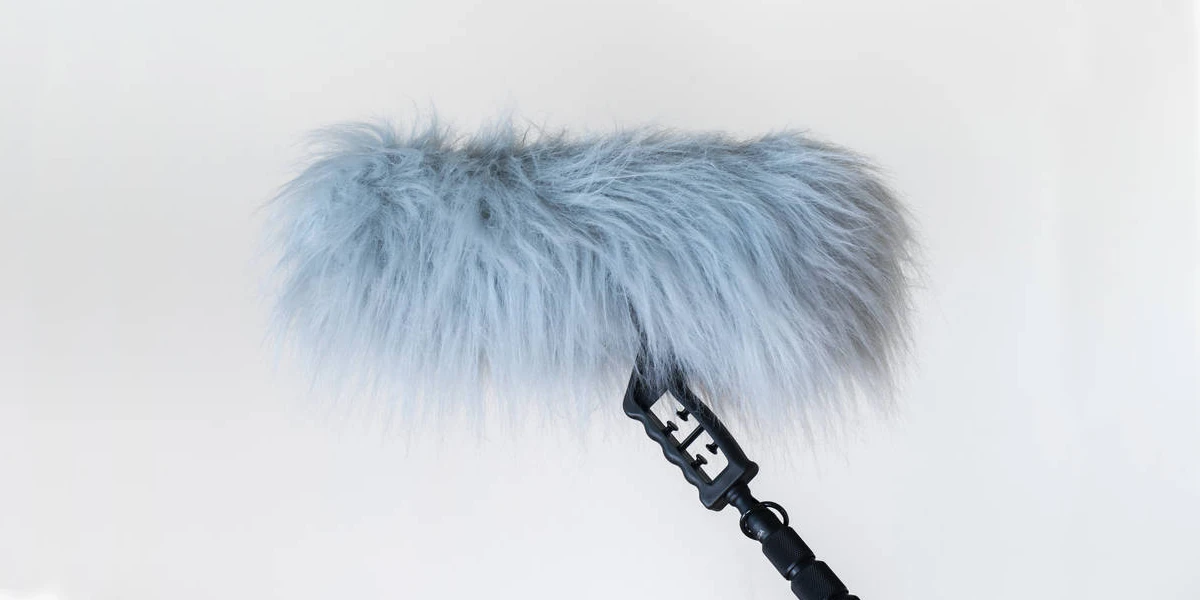HSS Podcast - Fluff and Function: Decoding the Furry Mystery of Shotgun Microphones
HSS Staff
Home recording is a hobby and a passion for many people who love music, podcasts, videos, and other forms of audio content. Whether you want to record your own songs, voice-overs, interviews, or sound effects, you need to use the right microphones for the job. Microphones are devices that convert sound waves into electrical signals, which can then be processed, edited, and played back. However, not all microphones are created equal. Depending on the type, quality, and purpose of the microphone, you can get different results in terms of audio quality, sound capture, noise reduction, and recording environment.
By the end of this blog post, you will have a better understanding of home recording microphones and how to choose and use them for different purposes. You will also learn some tips and tricks to improve your audio quality and sound capture. Stay tuned and let’s dive into the world of home recording microphones!
Shotgun Microphones
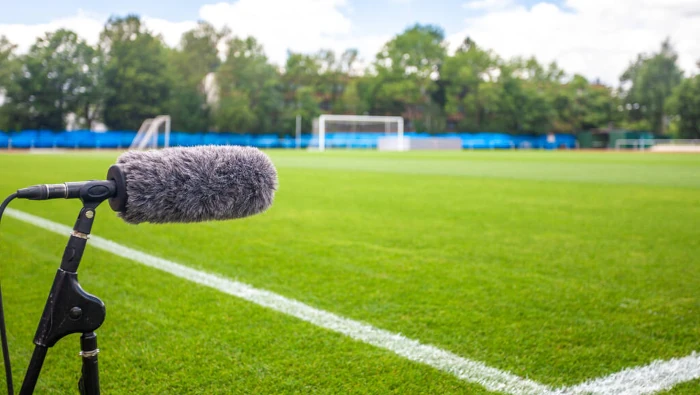
Shotgun microphones are one of the most popular types of home recording microphones, especially for capturing the sounds of wildlife, sports, and outdoor events. These microphones have a long, cylindrical shape that resembles the barrel of a shotgun, hence the name. But what makes them so special and how do they work?
Shotgun microphones are designed to have a high gain and a directional pattern, which means they can pick up sounds from a specific direction and reject sounds from other directions. This is achieved by using an interference tube, which is a hollow metal tube with slits or holes along its length. The interference tube allows sound waves coming from the front of the microphone to enter the capsule without any obstruction, while sound waves coming from the sides or the rear are canceled out by destructive interference. This results in a narrower and more focused pickup pattern, also known as a supercardioid or hypercardioid pattern.
Shotgun microphones are ideal for capturing distant or isolated sound sources, such as a bird singing in a tree or a car racing on a track. They can also reduce the impact of ambient noise, such as traffic, wind, or crowd chatter. However, shotgun microphones are not perfect. They have some limitations and drawbacks that you need to be aware of before using them.
Shotgun Microphones and Challenges
One of the main challenges of using shotgun microphones is handling wind noise. Wind noise is the unwanted sound caused by air hitting the microphone diaphragm or the interference tube. Wind noise can distort or mask the desired sound source, making it unusable. To prevent this, shotgun microphones are usually equipped with a furry windscreen, also known as a “dead cat” or a “wind muff”. This is a synthetic fur cover that wraps around the microphone and acts as a buffer against the wind. The dead cat reduces the wind noise without affecting the sound quality of the microphone.
Another challenge of using shotgun microphones is dealing with off-axis coloration. Off-axis coloration is the change in the frequency response of the microphone when the sound source is not directly in front of it. This means that sounds coming from the sides or the rear of the microphone will sound different than sounds coming from the front. This can affect the accuracy and consistency of the audio capture, especially when the sound source is moving or when the microphone is panning. To avoid this, you need to aim the shotgun microphone carefully at the sound source and keep it as steady as possible.
Shotgun microphones come in different lengths, ranging from short to extra long. The length of the shotgun microphone affects its performance and suitability for different applications. Generally speaking, the longer the shotgun microphone, the more directional and sensitive it is. This means that it can pick up sounds from farther away and reject more off-axis sounds. However, it also means that it is more prone to wind noise and off-axis coloration. Therefore, you need to choose the right length of shotgun microphone for your specific needs.
Some examples of popular shotgun microphones are:
- Schoeps CMIT 5U: This is a high-end shotgun microphone that features a unique interference tube design with circular cutouts, which improves the side and rear noise rejection. It also has a low self-noise and a neutral sound quality. It is suitable for professional film and TV production.
- Sennheiser MKH 416: This is a classic shotgun microphone that has been used for decades in the film and broadcast industry. It has a short barrel design that makes it easy to handle and mount. It also has a durable metal body and a moisture-resistant capsule. It is suitable for indoor and outdoor recording.
- Rode NTG-8: This is a long shotgun microphone that offers a high level of directionality and sensitivity. It has a low noise floor and a smooth frequency response. It also has a RF-bias technology that makes it resistant to humidity and temperature changes. It is suitable for capturing distant or quiet sound sources.
- Audio-Technica AT897: This is a budget-friendly shotgun microphone that delivers a balanced and natural sound quality. It has a relatively short and lightweight design that makes it portable and versatile. It also has a low-cut filter that reduces the low-frequency rumble. It is suitable for video production and field recording.
Studio Microphones
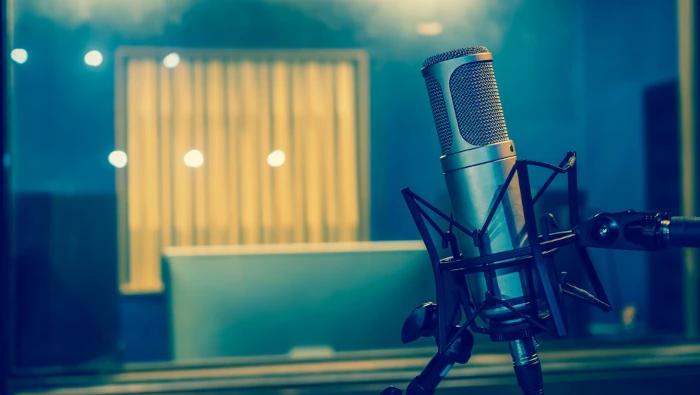
Studio microphones are another type of home recording microphones that are widely used for recording vocals and instruments in a controlled environment. These microphones are usually condenser microphones, which means they are more sensitive and accurate than dynamic microphones. They also require an external power source, known as phantom power, to operate. Studio microphones have a large diaphragm, which is the part of the microphone that vibrates in response to sound waves. The size of the diaphragm affects the frequency response, the polar pattern, and the dynamic range of the microphone. Generally speaking, the larger the diaphragm, the smoother and warmer the sound quality, the wider the pickup pattern, and the higher the dynamic range.
Studio microphones are ideal for capturing detailed and nuanced performances, such as singing, acoustic guitar, piano, or strings. They can also handle high sound pressure levels, such as drums, brass, or electric guitar. However, studio microphones are not very versatile. They are designed to work best in a quiet and isolated environment, where there is no background noise, echo, or feedback. They are also more fragile and expensive than dynamic microphones. Therefore, you need to take good care of them and use them wisely.
Studio microphones come in different shapes, sizes, and features, depending on the brand and model. Some of the most common and popular studio microphones are:
- Neumann U 87: This is a high-end studio microphone that is considered one of the best and most versatile microphones ever made. It has a large-diaphragm condenser capsule that offers three selectable polar patterns: cardioid, omnidirectional, and figure-8. It also has a switchable low-cut filter and a -10 dB pad. It is suitable for professional vocal and instrument recording in any genre.
- Rode NT1-A: This is a budget-friendly studio microphone that delivers a clear and natural sound quality. It has a large-diaphragm condenser capsule that has a cardioid polar pattern. It also has a low self-noise and a wide dynamic range. It is suitable for home and project studio recording of vocals and instruments.
- AKG Pro Audio C414: This is a quality studio microphone that offers a lot of flexibility and versatility. It has a large-diaphragm condenser capsule that has nine selectable polar patterns: cardioid, wide cardioid, hypercardioid, omnidirectional, figure-8, and four intermediate settings. It also has a switchable low-cut filter, a -6 dB, -12 dB, or -18 dB pad, and a peak hold LED. It is suitable for recording vocals and instruments in various situations.
- Audio-Technica AT2020: This is a cheap and cheerful studio microphone that provides a decent and balanced sound quality. It has a large-diaphragm condenser capsule that has a cardioid polar pattern. It also has a low-mass diaphragm and a high SPL handling. It is suitable for beginner and intermediate studio recording of vocals and instruments.
Lapel Microphones
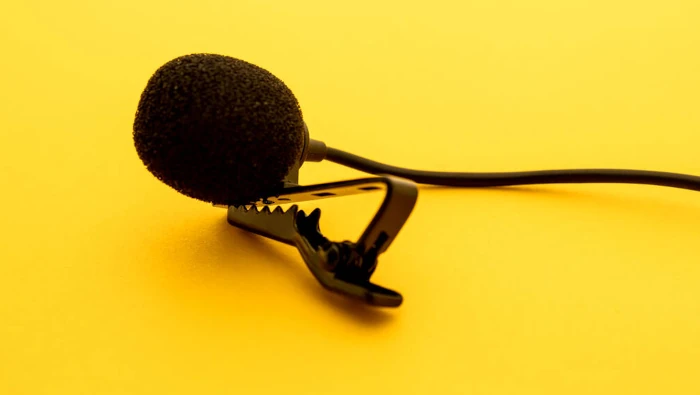
Lapel microphones are another type of home recording microphones that are widely used for recording speech and interviews in a discreet way. These microphones are small, clip-on microphones that attach to clothing, such as a lapel, collar, or tie. They are also known as lavalier microphones, body microphones, or personal microphones.
Lapel microphones are designed to have a low profile and an omnidirectional pattern, which means they can capture sounds from all directions equally. This makes them handy for recording on-the-move or in situations where the speaker is not facing the microphone directly. It also means they are less susceptible to off-axis coloration or plosive sounds, which can affect the quality and consistency of the audio.
Lapel microphones are ideal for capturing clear and natural speech, such as in documentaries, podcasts, social media, news shows, or theater. They can also be used to record instruments, such as acoustic guitar, violin, or flute, by clipping them near the sound source. However, lapel microphones are not very powerful or versatile. They are designed to work best in a close and intimate setting, where there is no background noise, echo, or feedback. They are also more fragile and sensitive than dynamic microphones. Therefore, you need to take good care of them and use them wisely.
Lapel microphones, as many others, come in different shapes, sizes, and features, depending on the brand and model. Some of the most common and popular lapel microphones are:
- Boya BY-M1 Pro: This is a unique lapel microphone that features a USB-compatible connector, making it perfect for mobile recording and content creation. It has a 6-meter cable and a built-in headphone jack for monitoring. It also has a switchable battery mode and a -10 dB pad. It is suitable for smartphones, tablets, laptops, and cameras.
- Saramonic Blink 900 B2: This is a dual-channel wireless lapel microphone system that offers a lot of flexibility and convenience. It has two transmitters and one receiver that operate on the 2.4 GHz frequency band. It also has a built-in lithium battery, a mute function, and a OLED display. It is suitable for live events, interviews, and presentations.
- ETCAM Bluetooth Lapel Microphone: This is a budget-friendly lapel microphone that uses Bluetooth technology to connect to your devices. It has a 10-meter wireless range and a rechargeable battery. It also has a noise-canceling function and a clip-on design. It is suitable for video calls, online meetings, and vlogging.
- UGREEN Wireless Microphone: This is a quality lapel microphone that provides a clear and natural sound quality. It has a 2.4 GHz wireless connection and a 50-meter transmission range. It also has a low-latency mode, a volume control, and a LED indicator. It is suitable for recording, streaming, and gaming.
Parabolic Microphones
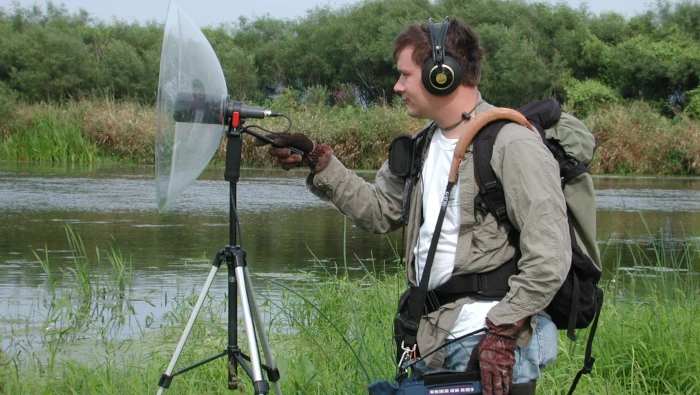
Parabolic microphones are another type of home recording microphones that are widely used for capturing distant sounds in sports and wildlife. These microphones have a dish-shaped reflector that concentrates the sound waves onto a microphone element mounted at its focus. The reflector increases the microphone’s range and directivity, which means it can amplify sounds from a specific source and ignore sounds from other sources.
Parabolic microphones are designed to have a long range and a focused pattern, which means they can pick up sounds from far away or from a narrow angle. This makes them handy for recording sounds that are otherwise difficult or dangerous to approach, such as birds, animals, or athletes. It also means they are less affected by ambient noise, such as wind, traffic, or crowd noise. However, parabolic microphones are not very accurate or versatile. They are designed to work best at high frequencies, where the wavelength of the sound is much smaller than the diameter of the dish. This means that they have poor low-frequency response and off-axis coloration, which can affect the quality and consistency of the audio.
Parabolic microphones, the same way, come in different shapes, sizes, and features, depending on the brand and model. Some of the most common and popular parabolic microphones are:
- Wildtronics Pro Mini Parabolic: This is a compact and lightweight parabolic microphone that offers a good balance between performance and portability. It has a 22-inch dish that provides a 14 dB gain and a 7-degree beam angle. It also has a built-in amplifier, a low-cut filter, and a headphone jack. It is suitable for nature sound recording and field audio.
- Telinga Universal MK2: This is a quality and versatile parabolic microphone that offers a lot of flexibility and convenience. It has a 22-inch dish that can be folded for easy transport. It also has a detachable microphone capsule that can be used as a handheld or stand-mounted microphone. It is suitable for wildlife sound recording and documentary production.
- Klover MiK 26: This is a professional and powerful parabolic microphone that offers a high level of directionality and sensitivity. It has a 26-inch dish that provides a 18 dB gain and a 6-degree beam angle. It also has a low self-noise and a wide frequency response. It is suitable for sports broadcasting and long-range audio capture.
- DIY Parabolic Microphone: This is a cheap and cheerful parabolic microphone that you can make yourself with some basic materials and tools. You can use a plastic or metal bowl, a small microphone, a cable, and some glue or tape. You can also customize the size and shape of the dish to suit your needs. It is suitable for hobby and experiment purposes.
By the end of this section, you should have a better understanding of parabolic microphones and how to use them effectively. You should also learn some tips and tricks to improve your audio quality and range.
Conclusion
We have reached the end of this blog post on home recording microphones. We hope you have learned a lot about the different types of microphones and how to use them effectively. You should now be able to choose and use the best home recording microphones for your specific purposes. Whether you want to record vocals, instruments, speech, interviews, wildlife, sports, or anything else, you can find the right microphone for the job.
Here are some key takeaways from this blog post:
- Home recording microphones are devices that convert sound waves into electrical signals, which can then be processed, edited, and played back.
- There are four main types of home recording microphones: shotgun microphones, studio microphones, lapel microphones, and parabolic microphones.
- Shotgun microphones are long, cylindrical microphones that are used to capture the sounds of wildlife in documentaries. They have a high gain and a directional pattern, which means they can pick up sounds from a specific direction and reject sounds from other directions. They also have a fuzzy windscreen, also known as a “dead cat”, which protects them from wind noise.
- Studio microphones are large, round microphones that are used to record vocals and instruments in a controlled environment. They have a flat frequency response and a polar pattern, which means they can capture sounds from different angles and distances. They also have an anti-pop filter, which is a disc-shaped screen that prevents plosive sounds, such as “p” and “b”, from distorting the audio.
- Lapel microphones are small, clip-on microphones that are used to record speech and interviews in a discreet way. They have a low profile and an omnidirectional pattern, which means they can capture sounds from all directions equally. They also have a foam windscreen, also known as a “dead mouse”, which reduces the impact of breath and wind noise.
- Parabolic microphones are dish-shaped microphones that are used to capture distant sounds in sports and wildlife. They have a long range and a focused pattern, which means they can amplify sounds from a specific source and ignore sounds from other sources. They also have a parabolic reflector, which is a curved surface that concentrates the sound waves onto the microphone.
If you enjoyed this blog post, please share it with your friends, family, or colleagues. You can also leave a comment below and let us know what you think. Do you have any questions, feedback, or experiences with home recording microphones? We would love to hear from you. Thank you for reading and happy recording!

